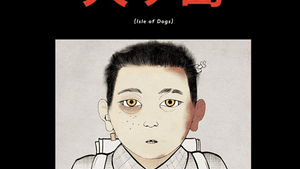Stay in the Loop
BSR publishes on a weekly schedule, with an email newsletter every Wednesday and Thursday morning. There’s no paywall, and subscribing is always free.
Dogged by doubts
'Isle of Dogs,' by Wes Anderson

The internet is abuzz with think pieces about Wes Anderson’s new feature-length animation Isle of Dogs. Set in Japan, it stars a mostly white, American-led vocal cast. Is the film an homage to Japanese culture or downright appropriation? As expected, much of the critical condemnation comes from writers of color, while Anderson apologists tend to be cinephiles of European-American descent.
As a mixed-race Japanese American, I often find myself torn between communities, asked to choose sides, or told I’m not enough of one or the other. This film brings up a lot of familiar adolescent feelings, in part because its protagonist, Atari, is a 12-year-old boy, but also because the crux of this debate rests on a foundation of not-enoughness.
The trouble with Japanimation
This is a solid film that hits all the right notes in Anderson’s trademark auteur genre, and its stop-motion animation is a joy to watch. Moreover, it achieves something filmmakers of Japanese descent still struggle to accomplish by bringing their culture to the masses.
Yet, in watching the film, I’m reminded that its culture of origin was so highly stigmatized by systemic racism and the aftermath of World War II-era anti-Japanese propaganda that most of our Japanese parents and grandparents intentionally assimilated out of it. Now, a celebrated white filmmaker is supported by a major Hollywood studio in making a film of the very same traditions for which our families were scorned.
Clearly, an enormous amount of research went into the production of this film; Anderson did include several Japanese partners, most notably Kunichi Nomura, an actor, writer, and radio personality credited as co-writer for his role in crafting the Japanese dialogue. Anderson has also professed his own love for and admiration of Japanese culture.
These facts suggest that Isle of Dogs is a legitimate homage. But ultimately, if a Japanese-American director wanted to produce a similar film, they simply could not secure the financing. In addition, given the same opportunity, there are few among us who are “Japanese enough” to create such a film without the help of our overseas cousins.
Funny, ha-ha?
Many have drawn comparisons to Kubo and the Two Strings, a 2016 animation also set in Japan with a mostly white leading vocal cast. However, director Travis Knight and his co-writers did a much better job of synthesizing the elements of a traditional Japanese fable in a way that honored the Japanese people. Plus, although their roles were minor, Kubo also included veteran Japanese-American actors George Takei and Cary-Hiroyuki Tagawa among a supporting cast of at least a dozen Asian-American voice actors.
Anderson’s film employs Japanese actors in supporting roles, and while there didn't appear to be Japanese-American actors among the cast, Atari is voiced by an 11-year-old biracial Japanese-Canadian boy, Koyu Rankin. But I worry that his inclusion in this production may be used by PC-policing cinephiles to suggest some kind of buy-in from our diasporic community.

I do not think it is a prerequisite to be of Japanese ancestry in order to produce a film set in Japan. However, it is important to acknowledge that Japanese people in Japan will not be impacted by the negative stereotypes Isle of Dogs perpetuates in the way Japanese Americans will, which is why it would have been nice to have someone from our community involved.
The film plays up silly stereotypes to an American audience who knows little about life in Japan. Anderson and his writers know their audience and give them what they want — the same clichéd tropes of weird Japan we grew up being bullied for. At a screening I attended, his comic treatment of traditional cultural elements such as sumo and sushi elicited audience belly laughs.
Doggedly white
With the exception of the pro-dog scientists, every Japanese adult onscreen is either morally bankrupt or following the crowd. Mayor Kobayashi (voiced by Nomura) and his cronies are cruel to dogs, and the only voice of reason in Megasaki City comes from a white girl from Ohio (voiced by Greta Gerwig) who convinces the student newspaper to investigate her conspiracy theory linking the mayor to a planned canine extermination.
While the decision to leave the Japanese dialogue without subtitles could be viewed as an attempt to retain cultural authenticity, at the screening I attended, it often resulted in cheap laughs from the audience. There is a certain privilege in being monolingual by choice. Leaving the Japanese without translation suggests that the information in that language is unimportant.
We are meant to empathize with the outsider perspective embodied by the dogs. Through their use of English, they are coded as white Americans. This presents a not-so-subtle anti-Japanese bias that permeates the film.
If even one of the dogs had been voiced by a Japanese-American, this would be a different conversation, but having them all played by white actors reinforces the notion that American-ness is defined by European ancestry.
The result is a film that tells Japanese-Americans our community is neither Japanese enough nor American enough to participate.
What, When, Where
Isle of Dogs. Written and directed by Wes Anderson. Philadelphia-area showtimes.
Sign up for our newsletter
All of the week's new articles, all in one place. Sign up for the free weekly BSR newsletters, and don't miss a conversation.
 Rob Buscher
Rob Buscher